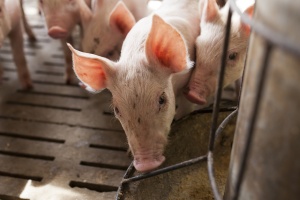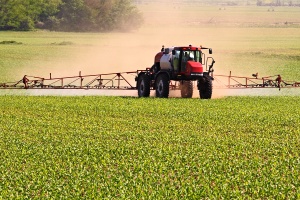A veterinarian’s perspective: how antibiotics are really used in dairy farming
Dr. Brandon Scharping is a veterinarian who works with family dairy farms in northern Illinois and southern Wisconsin. Brandon’s early experiences in 4-H, FFA, showing dairy cattle and working on a dairy farm helped determine his career path and his passion for working with cattle every day. We asked Brandon to share his perspective on how antibiotics are used in farming today.
What kind of dairy farms do you work with?
I work with many wonderful family farms in northern Illinois and southern Wisconsin – some with 30 dairy cows, some with 3,700. Something often overlooked is that in the U.S. and in Illinois, 96% of farms are family-owned. No matter the farm, compassion for cow comfort and animal welfare is important at all the dairies I work with.
As a veterinarian, I focus mainly on preventative health through on-farm vaccination programs, reproductive examinations, milk quality, hoof health and even barn ventilation consultation. Our efforts may sound like “farm speak,” but it’s just like we as humans go in for regular checkups to prevent or catch health threats. I also focus on animal care training because it’s critical for those working with animals to be able to recognize early signs of sickness so treatment can be initiated quickly.
What role do veterinarians play with antibiotic use on dairy cattle?
For any prescription antibiotics to be used on farms, there has to be a prescription from the herd veterinarian. And this prescription can’t be written without a relationship called a Veterinary-Client-Patient-Relationship (VCPR). What that does is allow veterinarian oversight through proper training and protocol development to ensure farmers and farm employees use antibiotics judiciously, which means:
- The antibiotic is only used for approved treatments.
- The antibiotic is given with the proper route of administration, and based on correct body weight dosage, correct dosing frequency and proper duration of treatment.
Are antibiotics used for dairy cows also used for humans?
We are very careful to minimize the use of antibiotic drug classes in farming that are important for human healthcare, and we cannot use these medically important antibiotics in ways that aren’t listed on the label.
An example is Enrofloxacin, which is a drug in a class of antibiotics used for Salmonella enteritis in people. We can only use this type of antibiotic for respiratory disease in cattle, no other health issues.
On the opposite side of that, the most commonly used antibiotic for dairy cattle is ceftiofur because that antibiotic is not used in human medicine.
Should we be worried about antibiotics in our milk and meat?
There is no need to worry about antibiotics in the milk you drink or the meat you eat. ALL milk and meat is antibiotic-free. There are numerous checks and balances to ensure a safe food supply that is antibiotic-free:
- All medications used in food animals are given a standard drug elimination time, or withdrawal period. This withdrawal period is on the label and allows the farmer to know exactly how long until the milk and meat is clear from antibiotics.
- Each animal has individual identification and a treatment record to ensure treatments are recorded and that the animal’s milk or meat doesn’t enter the human food chain until it’s cleared.
- Each tank of milk picked up at each individual farm is tested for antibiotics, and then the entire truckload is tested again before being unloaded at the dairy plant.
- If a sample tests positive, the farmer’s tank that was positive for antibiotics must pay for the whole truck load of milk, and it gets dumped down the drain. So, farmers not only have an ethical reason to make sure their milk is antibiotic-free, they also have a financial one. It’s also important to remember that farmers and their families are consumers of their own animal products, and they want what’s best for their families, just like the rest of us do.
Bottom line, dairy products are safe, and they’re one of the most nutritious food groups out there, containing essential vitamins, minerals and protein. We’re also seeing more delicious options for lactose-free milk options for those who are lactose intolerant.
The best part? Dairy starts with farm families who are passionate about what they do. They understand the importance of caring for the land and their animals so that future generations can have the opportunity to farm, too.
Have questions about antibiotics in dairy farming? Post them in the comments!











0 Comments